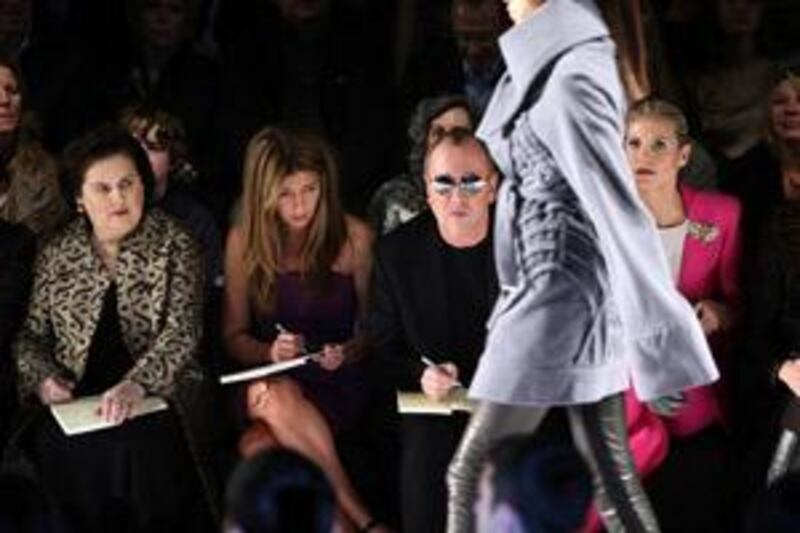One down, two and a half to go... fashion weeks that is. The circus that is the spring/summer 2010 international catwalk season, which kicked off in New York 10 days ago, has pitched up in London. Today - day three - there are 10 presentations alone on the official calendar and twice as many going on in various locations dotted across town. Exciting stuff. And we're not just talking about fashions on the runways. Glancing at the audience, those stylists and magazine editors who between them set the very compass of fashion all gathered under the one roof, is by far my favourite part.
You find more trends among this lot than on any red carpet. Sure, designers make the dishes but it's the stylist or editor who works out what's going on the menu. Up close, fashion diagnosticians are fascinating. Not so much a soup as a salad bowl in terms of their individual looks. Let's just say no matter the season or what's going on trendwise, a tomato will always look like a tomato. Take Suzy Menkes, the formidable fashion editor of The International Herald Tribune. Today, she will be wearing the same quiffed hairdo and something fetchingly anonymous, as she has done for the past four decades. Remarkably, unlike the rest of us lemmings, the crowd responsible for fuelling our addiction to accumulation are immune to the very trends they promote.
Occasionally they might give a nod to whatever they have ordained fashionable - the vertiginous stacked heel, superfluous buckles, "body-con" - but most stick rigidly to just one style: one that suits both their figure and status as a style guru. This could be anything from "talking point" couture collector's items ("a gift from our beloved Yves in '83") to heirloom jewels. While they may love Balenciaga, they will be acutely aware of fashion's tendency to be ageorexic/sizest. They also face a political minefield in terms of whose products they are seen in. Too much Chanel? Too little Dior? Either could be devastating in terms of advertising in their publications. Nor must they be seen as shrinking violets.
At the core of the fashion It-eratti are a bunch of timelessly elegant (as opposed to "on-trend") women led by US Vogue's Anna Wintour, French Vogue's Carine Roitfeld, the Sozzani sisters, Franca, editor-in-chief of Italian Vogue since 1988 and her sister, Carla, the former fashion stylist who founded the legendary Milan boutique, 10 Corso Como, and Menkes. There is also a handful of guys at the hub of fashion's elite like Tim Blanks, who works for Style.com, a notable authority on all catwalk matters, and Andre Leon Talley, Wintour's statuesque and debonair sidekick who recently wore velvet heeled slippers ("man mules") to a show which no one dared question.
Until now the only people who got a glimpse of the most important style-makers on the planet were their peers. That's all over thanks to "hawkers", the latest addition to the fash pack, who, armed with a camera, have started to prey on professional trendsetters. Take Scott Schuman - the Canadian behind www.thesartorialist.com - for example. As well as blowing the cover on fashionistas, his paparazzi style is influencing fashion campaigns.
What I find miraculous about certain fashion editors is not just that they wear the same clothes year in year out but how they spookily all look the same age (or is this simply the sign of being innately a good stylist?). It is inspiring to see so many effortlessly stylish women looking fantastic, freakish and fabulous, working a sequin beret, a pair of sparkly Indian earrings or "glam grunge", not because it's fashionable but because it is their look.





